Physical Address
304 North Cardinal St.
Dorchester Center, MA 02124
Physical Address
304 North Cardinal St.
Dorchester Center, MA 02124
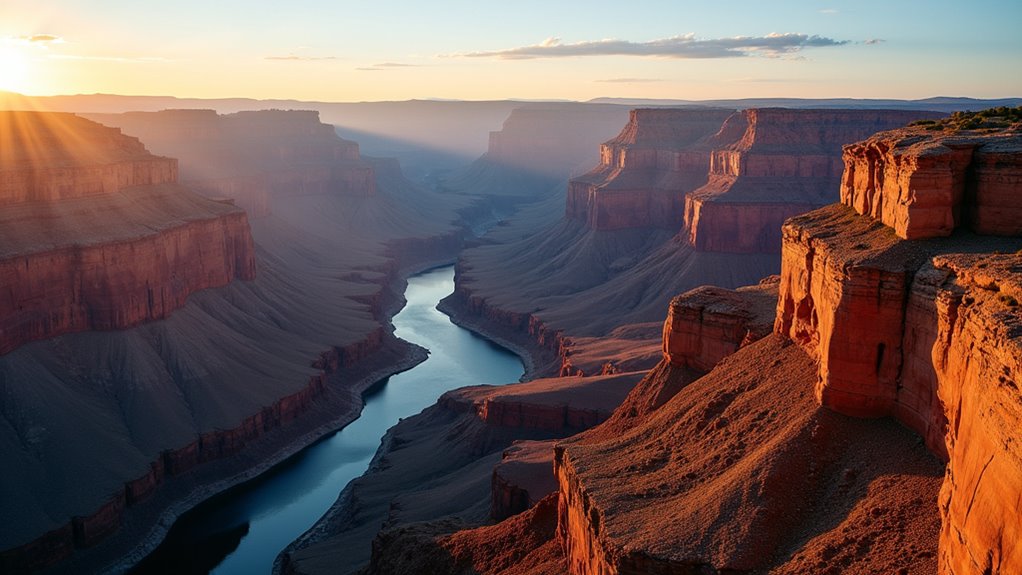
Uncover secret free viewpoints at Grand Canyon National Park that rival expensive tours—discover which hidden spots offer the most spectacular vistas.
You don’t need to spend a fortune to witness one of America’s most spectacular natural wonders. The Grand Canyon offers countless free viewpoints that’ll leave you speechless, from the easily accessible South Rim to the more secluded North Rim vistas. Whether you’re planning a day trip or an extended stay, knowing which spots deliver the most stunning views—and when to visit them—can transform your experience from ordinary to absolutely unforgettable.
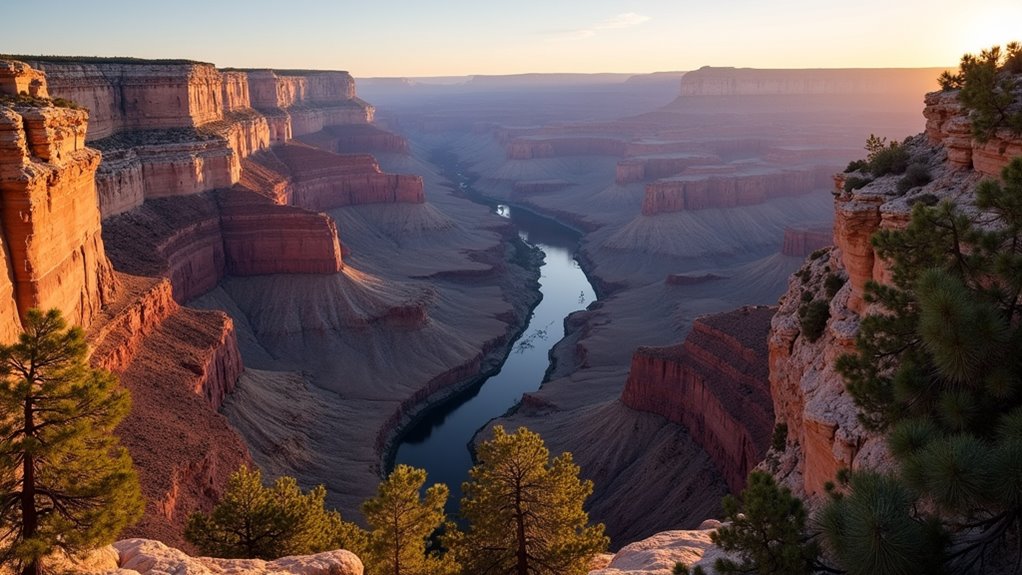
The South Rim offers dozens of viewpoints, but five standout locations deliver the most spectacular vistas without requiring expensive guided tours or lengthy hikes. Mather Point provides stunning sunrise views and easy parking access.
You’ll find Yavapai Observation Station combines panoramic scenery with free educational exhibits inside its geology museum. Desert View Watchtower offers 360-degree perspectives for just $3, making it incredibly budget-friendly.
Hopi Point delivers the park’s most photographed sunset views, though you’ll need to arrive early for parking spots. Grandview Point showcases dramatic canyon depth with fewer crowds than popular locations.
Each viewpoint connects via free shuttle buses, eliminating parking hassles and gas costs while maximizing your sightseeing time. The Grand Canyon consistently ranks among the world’s best hikes for adventurous travelers seeking unforgettable natural experiences.
While South Rim viewpoints draw millions of visitors annually, North Rim’s secluded overlooks offer equally breathtaking scenery with a fraction of the crowds and costs.
North Rim delivers stunning canyon vistas without the South Rim’s overwhelming crowds and inflated prices.
You’ll find parking that’s free and accessible at Angel’s Window, where a natural rock arch frames canyon views perfectly for photos.
Cape Royal provides the widest panoramic vista on the North Rim – it’s wheelchair accessible and just a half-mile walk from parking.
For solitude, head to Point Imperial, the highest viewpoint in the park at 8,803 feet. You’ll often have it entirely to yourself.
The North Rim closes from mid-October to mid-May due to snow, so plan accordingly.
Gas and food cost considerably less than South Rim prices, making it budget-friendly for extended stays.
Before embarking on your Grand Canyon adventure, consider securing travel insurance to protect against unexpected trip cancellations or medical emergencies during your visit.
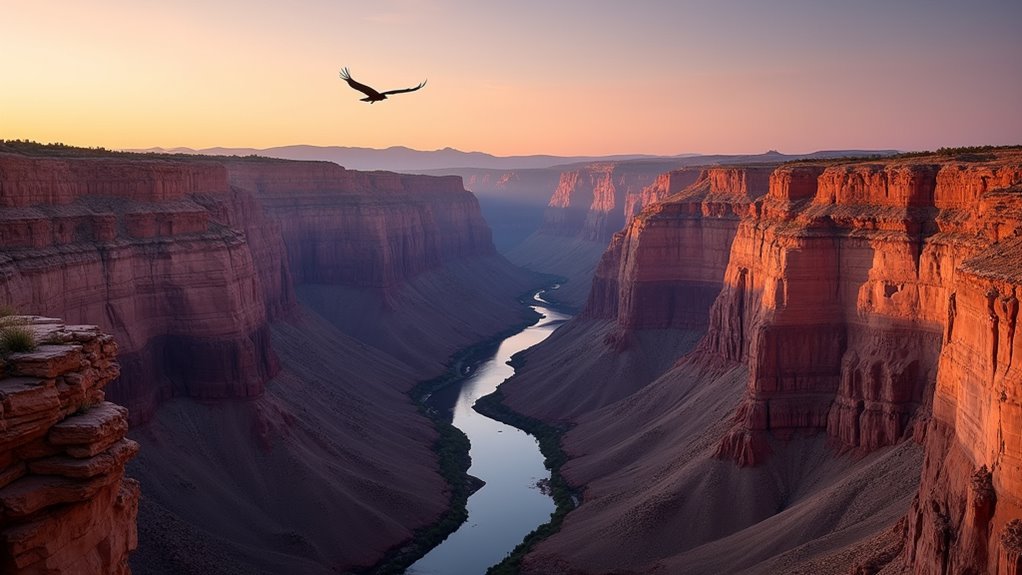
When should you visit Grand Canyon for the most stunning photos and comfortable sightseeing? You’ll want to plan around golden hour – that magical time just after sunrise and before sunset when warm light transforms the canyon’s red rocks into glowing masterpieces.
Arrive early, around 6 AM, to capture sunrise without crowds and save on parking fees. Late afternoon, between 4-6 PM, offers equally spectacular lighting for photography.
Avoid midday visits when harsh overhead sun creates unflattering shadows and temperatures soar.
Spring and fall provide the best weather conditions – mild temperatures and clear skies perfect for extended sightseeing sessions.
Winter mornings can be frigid but offer crystal-clear visibility.
Summer means intense heat, so stick to early morning adventures. You’ll get better photos and won’t drain your water budget fighting dehydration.
Where can you find the most breathtaking canyon vistas without breaking your hiking budget or your back? The Rim Trail‘s your best bet – it’s mostly paved, free, and stretches 13 miles along the South Rim. You’ll hit iconic viewpoints like Mather Point and Yavapai Observation Station without breaking a sweat.
For something more challenging, try the South Kaibab Trail. Don’t hike to the bottom unless you’re experienced, but Ooh Aah Point (1.8 miles roundtrip) delivers stunning views with moderate effort.
The Bright Angel Trail offers similar rewards at Plateau Point, though it’s longer.
Skip expensive helicopter tours – these trails give you equally spectacular photos and stories. Pack water, wear sturdy shoes, and start early to beat crowds and heat.
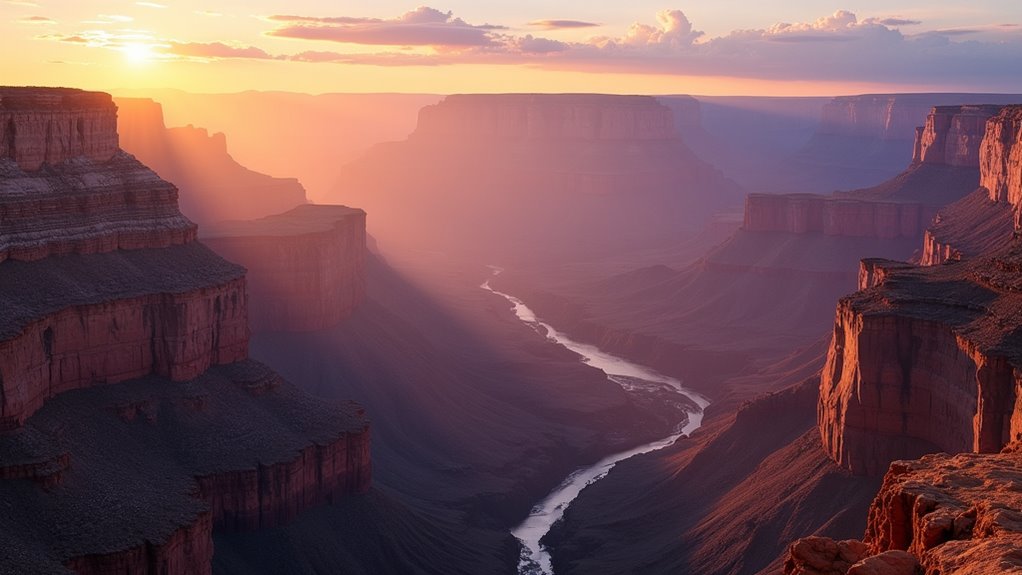
Since the Grand Canyon transforms dramatically in golden hour light, you’ll want to stake out the perfect spot well before the sun makes its move. Head to Hopi Point for sunset – it’s crowded but free and delivers incredible views. Desert View Watchtower offers a quieter alternative with equally stunning vistas.
For sunrise, Mather Point’s your best bet. It’s easily accessible from the visitor center and you won’t need to drive in darkness. Grandview Point provides a more secluded experience if you don’t mind the extra drive.
Arrive 30-45 minutes early to secure parking and claim your viewing spot. Bring layers since temperatures drop markedly at dawn and dusk. Pack snacks and water – you’ll be standing for a while as nature puts on its spectacular show. Don’t forget a reliable camping lantern to help you navigate safely in the pre-dawn darkness or after sunset when returning to your vehicle.
While you’re watching those breathtaking sunrises and sunsets paint the canyon walls, you’re actually witnessing millions of years of Earth’s history revealed in stone. Each colorful band tells a different story, and you don’t need an expensive geology degree to appreciate them.
Every sunrise at the Grand Canyon unveils Earth’s ancient secrets written in stone across millions of years.
The rim’s youngest Kaibab limestone formed 270 million years ago, while the bottom’s Vishnu schist dates back nearly 2 billion years. You’ll easily spot the bright red Redwall limestone and the dark Vishnu basement rocks.
The Grand Canyon’s layers read like Earth’s autobiography – ancient seas, deserts, and river systems all left their mark.
Pick up a free park geology guide at visitor centers. It’ll help you identify layers and understand what you’re seeing without spending extra money on tours. If you’re planning multiple visits to explore different sections of the canyon, consider whether renting equipment for each trip or investing in your own gear makes more financial sense.
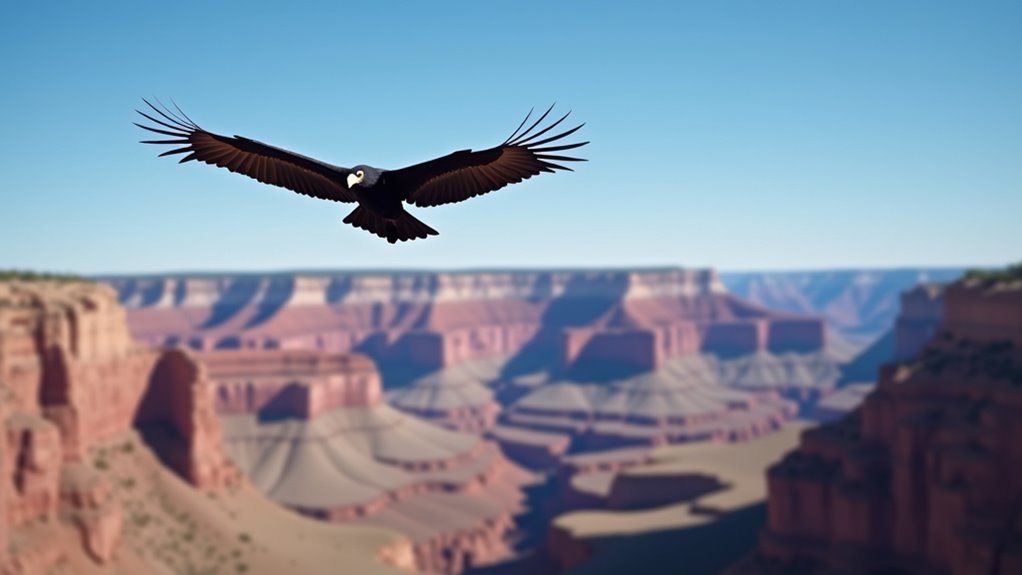
Beyond the stunning rock formations, Grand Canyon National Park hosts an impressive array of wildlife that you can spot without hiring expensive guides or joining costly tours. You’ll find elk grazing near the South Rim visitor areas, especially during early morning hours. Mule deer appear throughout the park, while bighorn sheep navigate rocky ledges along the Colorado River.
California condors soar overhead—look for their massive nine-foot wingspans. Ravens and rock squirrels are common near trails and picnic areas. For better wildlife viewing, bring binoculars from home rather than buying expensive ones at gift shops. Dawn and dusk offer the best spotting opportunities when animals are most active.
Desert View Drive and Hermit Road provide excellent wildlife viewing without entrance fees beyond your park pass. If you’re planning to explore the park with your four-legged companion, research camping safely guidelines to ensure both you and your dog can enjoy the wildlife viewing experience responsibly.
Although each season brings unique advantages to Grand Canyon visits, spring and fall offer the best combination of comfortable weather and reasonable crowds. You’ll find April-May and September-October provide mild temperatures perfect for hiking without summer’s scorching heat or winter’s icy trails.
Summer brings peak crowds and triple-digit temperatures, but you’ll have full access to all facilities and longest daylight hours. If you’re visiting then, start hiking before sunrise and carry plenty of water.
Winter offers solitude and dramatic snow-capped views, though the North Rim closes completely. You’ll save money on accommodations, but pack warm layers since temperatures can drop below freezing.
Book accommodations six months ahead for peak seasons. Consider visiting mid-week rather than weekends to avoid crowds and secure better rates on lodging. For those planning overnight camping trips, investing in a quality air mattress can significantly improve your sleep comfort during temperature fluctuations throughout the night.

Once you’ve planned your visit timing, make Desert View Drive your first priority for experiencing the Grand Canyon’s eastern rim. This 25-mile scenic route offers multiple viewpoints without crowds that plague the main visitor center area.
You’ll drive past Grandview Point, Moran Point, and Tusayan Museum before reaching Desert View Watchtower.
The 70-foot stone watchtower, built in 1932, costs nothing extra to climb. You’ll get 360-degree views of the canyon and Colorado River from the top observation deck.
The climb involves steep, narrow stairs, so wear comfortable shoes. Plan two hours for the entire drive and watchtower visit.
Stop at the gift shop for reasonably priced Native American crafts. Desert View also has restrooms, water fountains, and a small snack bar.
If you’re planning an extended camping trip in the area, consider bringing water filters to ensure safe drinking water throughout your outdoor adventure.
While Desert View provides excellent canyon vistas, you’ll want to seek out specific viewpoints that showcase the Colorado River‘s dramatic path through the canyon floor. The river appears as a thin ribbon from the rim, but certain spots offer clearer glimpses of this powerful force that carved the canyon over millions of years.
Best Colorado River viewpoints:
You don’t need expensive equipment to appreciate these views. Bring binoculars if you have them, but the naked eye reveals plenty.
Each viewpoint provides free parking and requires minimal walking from your car.
For those seeking more adventurous perspectives beyond traditional rim viewing, consider exploring glacier climbing trails that offer unique vantage points of America’s most spectacular landscapes.
You’ve discovered Grand Canyon’s magnificent viewpoints, from the South Rim’s accessible beauty to the North Rim’s secluded treasures. Like Dorothy realizing there’s no place like home, you’ll find that experiencing this natural wonder doesn’t require breaking the bank. Pack your own snacks, camp instead of staying in pricey lodges, and take advantage of free shuttle services. The canyon’s timeless majesty rewards every visitor, regardless of budget, with memories that’ll last forever.